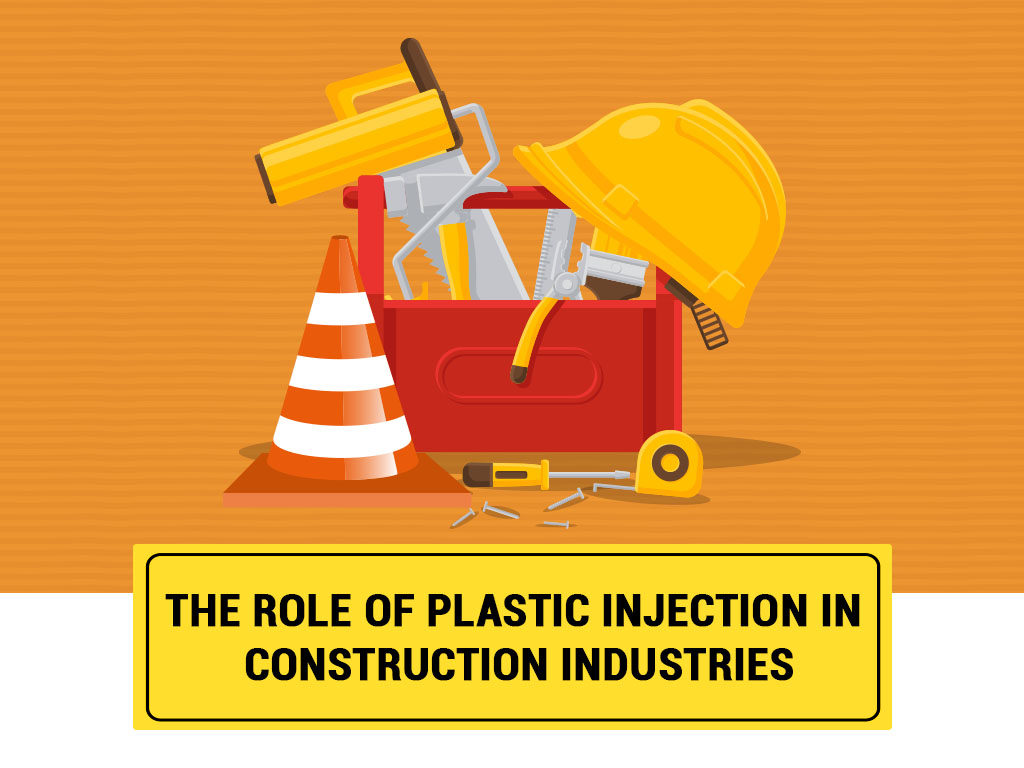The use of plastics has helped and transcended so many different industries across the world. Thanks to efforts in plastic injection molding by China and other major plastic producing countries, even the construction industry has had much to gain.
With its many facets, divisions, and areas of expertise, the construction industry needs a lot of machines and products. That is something that will never change.
However, market prices change all the time. If you put both simple concepts together, you can figure out that while the material needs of construction endeavors stay the same, the prices of these materials can rise.
This is why project managers and contractors are always looking for ways to save money, especially during times when their budget is less than ideal.
This is where plastics and plastic injections come into the picture. Thanks to the low costs involved in the production of plastic products, they are now being utilized more and more instead of their more expensive counterparts.
Aside from the cost-saving aspect, some plastics end up being stronger than metals themselves when applied to the machinery and structures involved in construction jobs.
However, it surprisingly does not stop there. Plastic products save energy because most thermoplastics are recyclable. They’re also lightweight and allow for safer and easier building processes.
The only question left begging to be answered is, what specific products and tools used in construction are made out of plastic? In response to that and to help further illustrate the role of plastics in construction, here are some examples.
Table of Contents
Piping
When it comes to the construction of buildings, piping is an integral part. After all, you need to convey water and gas to help a building function properly. That being said, plastics are perfect for pipes because they pass a wide number of requirements and standards.
Among these include hygiene, safety, and temperature resistance. Not only do they fulfill these requirements, but they do so at a high level of performance thanks to plastic’s flexibility and long-lasting nature.
Specific plastics used for piping include acrylonitrile butadiene styrene (ABS), polypropylene and polyethylene, among others.
Insulation
Another important area with regard to plastic use in construction is insulation. Insulation products conserve energy in houses and commercial properties as well as play a critical role in the food supply chain. They keep food products at the right temperature in refrigerators and chillers.
Insulation products play an important role in supplementing some of the emerging global trends like energy management.
In electrical insulation, plastics exhibit dielectric strength, thermal performance, high insulation, and exhibit a good resistance against corrosion, water, and heat. This makes plastic ideal for safe, high-performance electrical components. Plastics also provide flexibility for wiring and cable applications while being rigid enough to use for conduits.
The main plastic being used for this application is polyurethane. Compared to other building materials, polyurethane insulation has the highest thermal resistance and lowest thermal conductivity at a given thickness. Polyurethane can either be sprayed or created as a foam.
In either case, it helps keep the outside air out, allowing for greater cost containment and a more consistent temperature. From a safety standpoint, it also keeps out chemicals and flames.
Flooring
Plastic materials like polyvinyl chloride (PVC) and polyethylene are used to make flooring less prone to wear and tear. It also makes floors easier to clean and better for soundproofing which is always a plus when it comes to maintenance.
The best part about this is that when it is implemented into your flooring, it doesn’t compromise the integrity of the floor itself. You can still achieve a wood finish thanks to some synthetic/natural fiber blends.
Roofing
Just like in most of the construction applications listed here, plastic is also useful for your roof. Thanks to a lifecycle that can exceed 30 years, Spray Polyurethane Foam (SPF) works well with roofing. Roofs made with SPF provide long-term quality, while also keeping negative environmental impact at a low. This is because SPF is recyclable, energy-efficient, and maintains a high-performance quality that makes the need for roofing replacements low.
From turbulent winds, rain, sleet, snow, and hail to corrosion and foot traffic, SPF’s unique application process and adhesion properties help ensure that your roof will stay intact for years to come.
Key Takeaway
Despite what people might say about plastic, the fact that it has made human life better is indisputable. The construction industry, in particular, has benefited greatly and it shows through the many different ways it is being implemented. Thanks to plastic, construction costs became lower, machines and products became lighter and long-lasting, and newer innovations in plastic injection molding are enabled.
Alex is fascinated with “understanding” people. It’s actually what drives everything he does. He believes in a thoughtful exploration of how you shape your thoughts, experience of the world.

